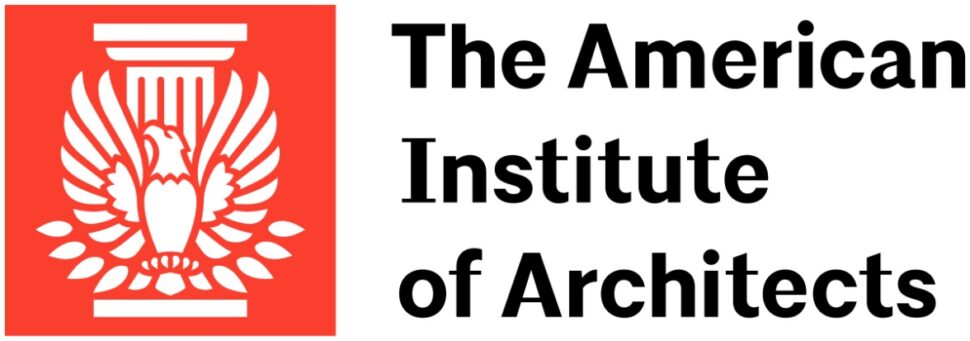Table of Contents
Are you acquainted with the importance of fireplace inspections vs. chimney inspections?
Discover the differences, including their importance, what each involves, and how they contribute to the safety and efficiency of your heating system.
The key differences between the two types of inspections, including what is involved in each process and their scope and purpose, are discussed.
The necessity of getting a fireplace or chimney inspection, as well as the benefits of having regular inspections done, is explained.
The inspections play a role in preventing fire hazards and maintaining efficiency in your home.
Understanding Fireplace Inspection
Understanding fireplace inspection involves essential safety measures to maintain the integrity and functionality of your home’s heating source. Regular inspections are crucial to prevent fire hazards and ensure the safety of your household.
It is important to emphasize that fireplace inspections go beyond mere visual checks; they involve a thorough examination of the entire system, from the chimney to the firebox. By identifying and addressing issues such as creosote and soot buildup, which can pose serious fire risks if left unattended, you not only enhance the efficiency of your fireplace but also safeguard your home against potential disasters. Proper maintenance practices, such as regular cleaning and inspections, are fundamental in ensuring that your fireplace operates safely and effectively year-round.
What is Involved in a Fireplace Inspection?
A comprehensive fireplace inspection involves a thorough evaluation of the flue, chimney, hearth, and firebox to assess safety and functionality. You should hire a certified professional for detailed maintenance and cleaning procedures.
During a fireplace inspection, check the flue carefully to ensure proper ventilation and draft function, which prevents the risk of carbon monoxide leaks. Examine the chimney’s structure and integrity for any signs of damage or obstruction that could pose a fire hazard. Inspect the hearth and firebox for cracks, deterioration, or buildup of creosote and soot, which can lead to chimney fires.
Addressing creosote and soot buildup is crucial as they can ignite and cause dangerous chimney fires if not properly managed during inspections, underscoring the need for expert assessment and cleaning services.
Understanding Chimney Inspection
Understanding chimney inspection is crucial for ensuring the safety and efficiency of a home’s heating system. Regular chimney inspections are essential for identifying potential hazards and maintenance needs to mitigate fire risks.
During a chimney inspection, trained professionals conduct a thorough examination of key components such as the flue liner, smoke chamber, and chimney caps. These inspections play a vital role in detecting issues like creosote buildup, cracks, blockages, or other problems that could impact the proper functioning of the chimney.
Addressing these issues promptly not only reduces the risk of a chimney fire but also enhances the efficiency of the heating system. Implementing routine maintenance practices, including cleaning and repairs, further improves the longevity and performance of the chimney and heating system.
What is Involved in a Chimney Inspection?
A comprehensive chimney inspection involves assessing the condition of the flue liner, smoke chamber, and chimney structure to ensure optimal safety and functionality. You should hire a certified technician for inspections to address any maintenance requirements.
During a chimney inspection, carefully examine the flue liner for cracks, deterioration, or blockages that may hinder proper ventilation. Evaluate the smoke chamber to ensure it is free of creosote buildup, a common cause of chimney fires.
Inspectors also review the overall chimney structure for indications of damage or structural issues that could pose risks. Certified professionals possess the necessary knowledge and tools to identify potential hazards and suggest appropriate repairs or maintenance measures for a safe and efficient chimney system.
Differences Between Fireplace and Chimney Inspections
It is important for homeowners to understand the differences between fireplace and chimney inspections in order to comprehend the specific scopes and purposes of each evaluation. Fireplace inspections primarily focus on the hearth and firebox, and chimney inspections concentrate on assessing the condition of the flue liner and smoke chamber.
The assessment of the firebox’s integrity during fireplace inspections is critical in identifying any cracks or damage that could pose potential hazards. Conversely, chimney inspections are primarily concerned with identifying and removing any blockages in the flue that could impede airflow. By recognizing these distinctions, homeowners can effectively prioritize maintenance tasks to ensure the safety and efficiency of their fireplace and chimney systems.
Scope and Purpose of Each Inspection
The scope and purpose of fireplace and chimney inspections vary significantly. Fireplace inspections primarily concentrate on the internal components of the heating source, while chimney inspections cover the entire chimney structure, including the flue liner and smoke chamber.
During a fireplace inspection, the technician assesses the firebox, damper, and overall condition of the fireplace unit. This evaluation aims to verify the safety and proper functioning of the fireplace.
Conversely, chimney inspections entail a more detailed assessment of the chimney’s exterior, searching for any indications of damage, obstructions, or structural problems that could potentially present a safety risk.
By conducting thorough inspections of both the fireplace and chimney, homeowners can ensure the safe operation of their heating system.
When to Get a Fireplace or Chimney Inspection
Understanding when to schedule a fireplace or chimney inspection is essential for maintaining a safe and functional heating system. Homeowners should arrange for annual inspections, particularly before the winter season, to ensure fire safety and mitigate potential hazards.
Regular inspections are crucial for identifying issues such as creosote buildup, blockages, or structural damage that may pose risks to the home. A professional inspection can catch early signs of wear and tear, helping to prevent costly repairs in the future.
By being proactive and scheduling inspections promptly, homeowners can have peace of mind knowing that their fireplace and chimney are operating effectively and safely. You should not postpone inspections until it is too late; it is important to prioritize safety and the well-being of your home through regular inspections.
Frequency and Signs of Needed Inspections
Understanding the frequency and signs of needed fireplace or chimney inspections is crucial in maintaining a safe living environment. Warning signs to watch out for include soot buildup, draft issues, or visible crevices, which may indicate the need for professional evaluation.
You should ideally schedule regular fireplace and chimney inspections at least once a year to prevent potential hazards and ensure efficient operation. Signs such as persistent smoke in the room, unusual odors, or difficulty starting a fire are red flags that require immediate attention. Common issues like clogs caused by bird nests or debris, obstructions such as creosote buildup, and draft problems like inconsistent airflow underscore the importance of timely assessments by certified professionals.
Benefits of Regular Inspections
Routine fireplace and chimney inspections have various benefits, such as preventing fire hazards, ensuring efficiency, and maintaining safety standards. Through inspections, homeowners can identify potential issues early and uphold the structural integrity of their heating systems.
These inspections help in identifying and resolving any blockages or build-up in the chimney or fireplace, which can significantly decrease the risk of fires. Regular inspections assist in optimizing the efficiency of the heating system, ensuring it functions at its best. By being proactive and following safety regulations through inspections, homeowners not only enhance the longevity of their fireplace but also establish a safer environment for their household.
Preventing Fire Hazards and Maintaining Efficiency
The main goal of regular fireplace and chimney inspections is to prevent fire hazards and maintain heating efficiency. By following safety standards and conducting timely evaluations, homeowners can reduce risks and ensure optimal performance from their heating systems.
Regular inspections also contribute to maintaining the structural integrity of the chimney, ensuring that it stays clear of creosote buildup and blockages that could lead to chimney fires. Efficient heating systems not only aid in lowering energy costs but also promote healthier indoor air quality by preventing the circulation of harmful pollutants.
Frequently Asked Questions
1. What is the difference between fireplace inspection and chimney inspection?
A fireplace inspection involves examining the interior and exterior of the fireplace. In contrast, a chimney inspection focuses specifically on the chimney structure.
2. Do I need to get both a fireplace and chimney inspection?
Yes, you should get both a fireplace and chimney inspection. This will ensure the safety and functionality of your entire fireplace system.
3. What are the key components of a fireplace inspection?
A fireplace inspection typically includes checking for any cracks in the firebox, damage to the flue, and proper ventilation.
4. Which areas of the chimney are typically inspected?
A chimney inspection covers the flue, chimney cap, crown, and any masonry or brickwork for signs of damage or obstruction.
5. How often should I get a fireplace and chimney inspection?
You should get a fireplace and chimney inspection at least once a year. This will ensure the safety and efficiency of your fireplace system.
6. Can I perform a fireplace or chimney inspection on my own?
You should not perform a fireplace or chimney inspection on your own because it requires specialized knowledge and equipment. It is best to hire a certified professional for an accurate and thorough inspection.
Latest Articles

How Close Can Furniture Be To My Fireplace?
Table of Contents1 What is the Recommended Distance Between Furniture and a Fireplace?2 What Factors Should Be Considered When Placing Furniture Near a Fireplace?3 What

What Is A Fireplace Insert And Why You Might Need One?
Table of Contents1 Why Might You Need a Fireplace Insert?2 What Are the Factors to Consider When Choosing a Fireplace Insert?3 How Do You Install

Slimline Fireplaces: Sleek Designs for Minimalist Interiors
Table of Contents1 Why Are Slimline Fireplaces Popular for Minimalist Interiors?2 Types of Slimline Fireplaces3 Benefits of Installing a Slimline Fireplace4 Factors to Consider Before



















































































